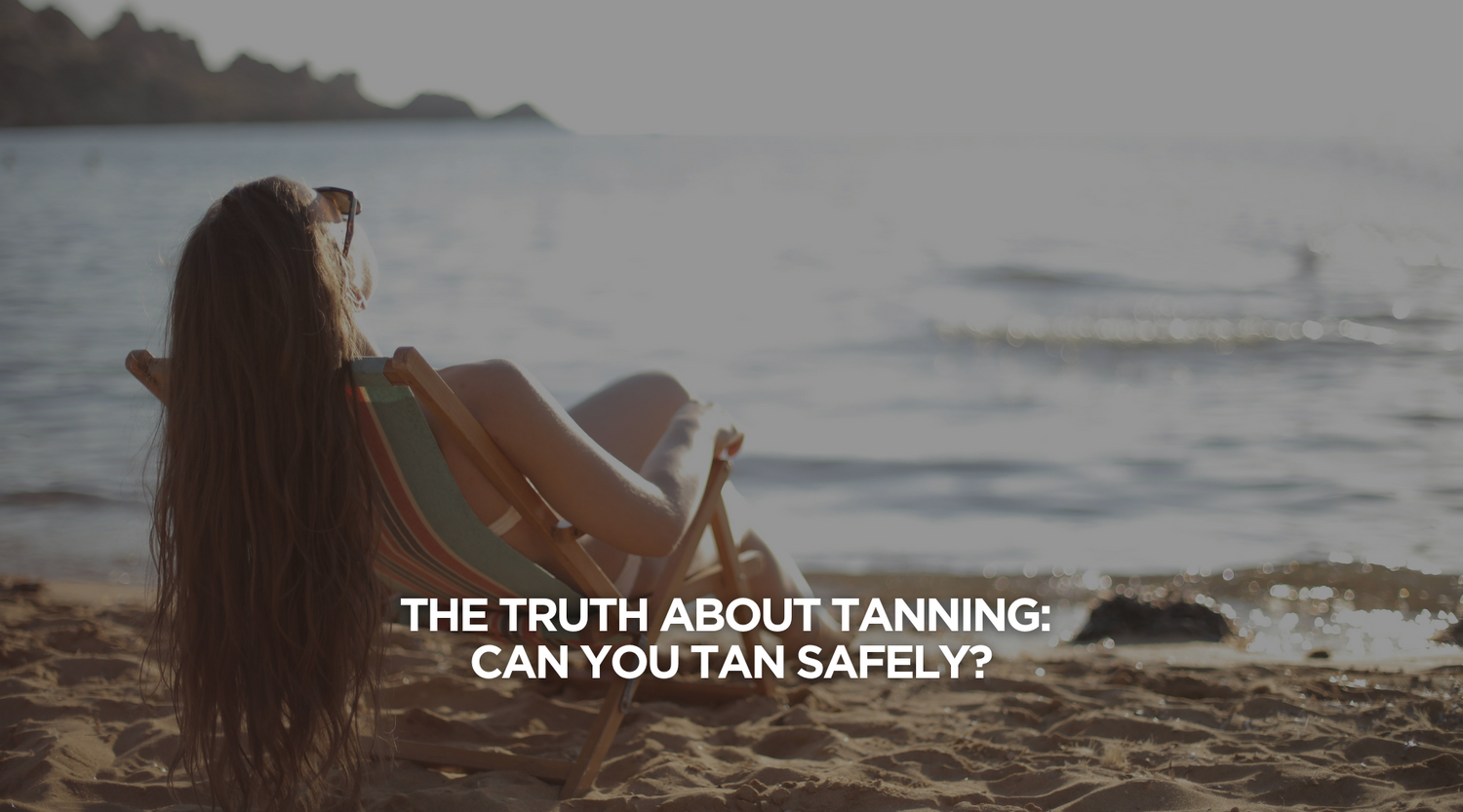For decades, a sun-kissed glow has been viewed as a sign of health, vitality, and time well spent outdoors. But as we learn more about the long-term impact of UV exposure, the question arises: Is tanning actually safe?
The short answer? No tan is a safe tan—at least not one achieved through UV exposure. Here's what you need to know about the risks of tanning, how to avoid sun damage, and safer ways to achieve that golden glow without compromising your skin health.
Is Tanning Safe?
Tanning is your skin’s natural defense mechanism. When exposed to ultraviolet (UV) rays from the sun or tanning beds, your skin produces melanin in response to DNA damage caused by those rays. That darker pigmentation is essentially your body’s attempt to protect itself from further harm.
So while a tan may look harmless (or even healthy), it’s actually a visible sign of skin damage.
What Makes Tanning Risky?
-
Increased Risk of Skin Cancer: Prolonged UV exposure significantly increases your chances of developing melanoma, squamous cell carcinoma, and basal cell carcinoma.
-
Premature Ageing: UV rays break down collagen and elastin, leading to wrinkles, sagging, and pigmentation issues.
-
DNA Damage: Every time your skin tans, there's DNA damage occurring beneath the surface—even if you don’t burn.
What About Tanning Beds?
Many people turn to tanning beds thinking they’re safer than the sun, but the World Health Organization classifies tanning beds as Group 1 carcinogens—the same category as tobacco and asbestos.
Using tanning beds before age 35 increases melanoma risk by 59%, and their concentrated UV radiation can be even more harmful than natural sunlight.
Is There Such a Thing as Safe Sun Exposure?
Getting outdoors is important for physical and mental wellbeing, but sun exposure should always be balanced with sun safety. Here’s how to do it right:
How to Avoid Sun Damage:
-
Apply Broad-Spectrum SPF50+ Sunscreen 20 minutes before going outdoors and reapply every 2 hours.
-
Wear UPF50+ Protective Clothing, including sun sleeves, wide-brim hats, and gloves.
-
Avoid Peak UV Times: Typically 10am–3pm, when UV radiation is strongest.
-
Check the UV Index Daily: In Australia, UV levels can be high even in winter or overcast conditions.
-
Seek Shade when possible, especially during prolonged outdoor activities.
Safer Alternatives to Achieve a Glow
If you love the look of bronzed skin, there are healthier, sun-free options:
-
Gradual Tanning Lotions: Build colour naturally over time without streaks or harsh chemicals.
-
Professional Spray Tans: A quick way to get a bronzed look with no UV exposure.
-
Bronzing Makeup or Tinted Moisturisers: Temporary, flexible options for a glow that washes off.
And remember, your skin’s natural tone is beautiful just the way it is. Prioritising protection over pigmentation is the best long-term strategy for skin health.
Complete Your Sun-Safe Routine with SParms
For those who spend time outdoors—whether playing sports, gardening, or enjoying a walk—UPF50+ protection is a game-changer.
SParms offers:
-
Sun Sleeves and Shoulder Wraps: Lightweight, breathable coverage for arms and shoulders.
-
Palmless Gloves: Hand protection without restricting grip or mobility.
-
Sun Protective Clothing: Designed for comfort, performance, and full UV protection.
By combining sun-safe clothing with sunscreen and smart habits, you can enjoy the outdoors without sacrificing your skin’s future.
